Part Three: Post World War II

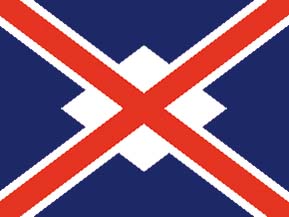 In 1946, Union-Castle Line took over three fast cargo motor vessels from the Ministry of War Transport, renamed as Drakensberg Castle, Good Hope Castle and Kenilworth Castle. Three ‘R’ class replacements had been delivered during 1944/45 as Rowallan Castle, Richmond Castle and Roxburgh Cstle, while two new ‘R’ refrigerated class, Riebeeck Castle and Rustenburg Castle, of a modified design, became the first new post-war vessels of the company. A new mail and freight contract was signed on 1st January 1947. Mail voyages were now of fourteen days duration, and additionally it was agreed that certain cargo ships would be transferred to South African registry to run on the Cape Town to eastern seaboard of U.S.A. service. Good Hope Castle transferred on 14th July 1947, with Drakensberg Castle shortly afterwards.
In 1946, Union-Castle Line took over three fast cargo motor vessels from the Ministry of War Transport, renamed as Drakensberg Castle, Good Hope Castle and Kenilworth Castle. Three ‘R’ class replacements had been delivered during 1944/45 as Rowallan Castle, Richmond Castle and Roxburgh Cstle, while two new ‘R’ refrigerated class, Riebeeck Castle and Rustenburg Castle, of a modified design, became the first new post-war vessels of the company. A new mail and freight contract was signed on 1st January 1947. Mail voyages were now of fourteen days duration, and additionally it was agreed that certain cargo ships would be transferred to South African registry to run on the Cape Town to eastern seaboard of U.S.A. service. Good Hope Castle transferred on 14th July 1947, with Drakensberg Castle shortly afterwards.
Cape Town also began a long period of ambitious dredging and infilling and reclamation of land in post-war years. The dredging was on the outside of the Duncan Dock and the railway station, which like Southampton Central Railway Station at one time had the sea next to one of the railway lines. The large Ben Schoeman Dock on the outside of Duncan Dock was the result of this dredging, which today is also home to the six deep water berths of the Cape Town Container Terminal (CTCT), with a large number of post Panamax gantry cranes. Duncan Dock in post-war years operated fruit and multi-purpose terminals, the cold store, a dry dock and a repair quay, and other facilities including the Jackson Wharf.
All of the express mail and intermediate liners went through a long period of refit and restoration of their public rooms after wartime trooping and hospital ship duties. Capetown Castle was the first of the mail liners to return to service on 9th January 1947, followed by Stirling Castle later in 1947 along with sister Athlone Castle, while Pretoria Castle returned to service in March 1947 with a new name, Warwick Castle, alongside her sister Durban Castle. Winchester Castle of 1930 resumed her service in September 1948, while Arundel Castle, dating from 1921, did not resume her service until September 1950, and Carnarvon Castle of 1926 did not return until June 1950. The surviving ‘Intermediate’ service liners had also resumed service, and Durban Castle and her sister Warwick Castle returned to the Round Africa service in 1950 as two new, larger mail ships had been delivered from Belfast in Edinburgh Castle and Pretoria Castle.
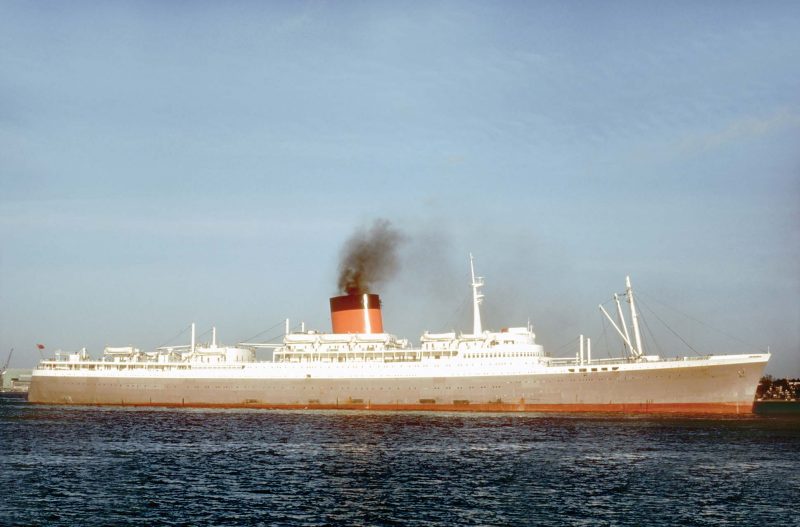
The new express steam turbine powered mail liners of Pretoria Castle and Edinburgh Castle came into service in July and November 1948 with accommodation for 214 First Class passengers, and 540 in Tourist Class, with a crew of 400. They had cost £2.5 million each and were handsome liners with much larger funnels. They are remembered for their comfortable public rooms, but due to post-war austerity these were not fitted out to the high, lavish standard of the pre-war express mail liners. The pair also suffered from vibration in the aft accommodation whenever they were stressed to their maximum speed of 22.5 knots to make up time after delays from bad weather. They missed two voyages in 1962 when they were taken out of service for a short refit with their outward appearance altered. The foremast was cut by one third to funnel height, a mast was fitted above the bridge, and the mainmast was removed. These alterations did not improve their appearance, and also their masts were repainted white instead of red brown. Pretoria Castle was sold on 1st January 1966 to the British subsidiary of the South African Marine Corporation (Safmarine), and re-entered service on 2nd February 1966 as S.A. Oranje with a new livery of white hull, Safmarine funnel of grey with a black top and blue, white and orange touching bands. She was employed on the same Cape Town mail service but her crew and management continued from Union-Castle Line.
New Intermediate And Round Africa Liners
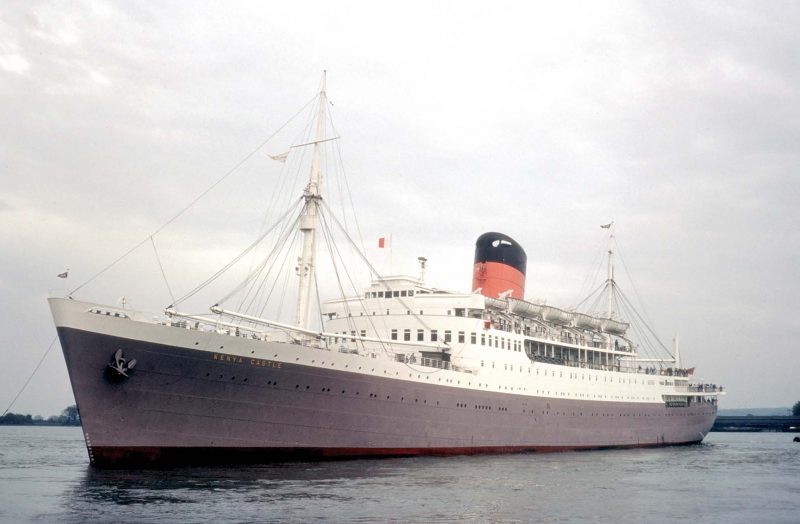
Bloemfontein Castle was delivered from the Belfast yard of Harland & Wolff Ltd. on 25th March 1950 and made her maiden voyage two weeks later from London and Rotterdam to Cape Town and Beira, the latter port that she alone served from the Cape. She was the first one class ship in the fleet of mail liners to the Cape, with accommodation for 720 passengers in Cabin Class, remaining as such until the advent of Transvaal Castle in 1961. She had the same hull design as Durban Castle of 1938, but the forward enclosed lounge was the full width of the ship with no walk around outer corridor. It was originally intended that she would be an emigrant carrier to East Africa for the ‘Ground Nuts Scheme’ of Rhodesia, but this was unsuccessful as the traffic dried up in 1948 when new South African elections in 1948 ousted Field Marshal Smuts and the new Nationalist Government ended the assisted passage migration scheme. She was thus always the ‘odd one out’ in the Union-Castle Line fleet, and was sold off in November 1959 to Chandris of Greece and renamed Patris after a long refit by Smith’s Dock Co. Ltd. at North Shields for the Australian assisted passage scheme with accommodation for one thousand Tourist Class passengers. She had rescued the 234 passengers and crew of the Dutch VNM liner Klipfontein on 8th January 1953 when the latter had hit submerged rocks five miles off Cape Barra near Inhambane when the two liners were racing each other for the only vacant berth in Beira. The anticipated boom in migration to South Africa never materialised in post-war years, and the one class Bloemfontein Castle never achieved full loadings, except perhaps on the South African cruise to Durban with Cape Town residents taking a holiday break.
The ‘Round Africa’ sisters of Rhodesia Castle, Kenya Castle and Braemar Castle were delivered from the Belfast yard of Harland & Wolff Ltd. in October 1951, February 1952 and November 1952 respectively, and made their maiden voyages from London via the Suez Canal and East African ports to the Cape and returning via the South Atlantic, or from London to the Cape and Durban returning via Suez to London. The old Llanstephan Castle of 1914 was sent for scrap after a career of 38 years, the longest of any vessel in the company history, and was followed by Llandovery Castle of 1925 in 1953, and Llangibby Castle of 1929 in 1954. They had accommodation for 530 one class passengers, which was remodelled in 1960 to only 442 one class passengers, with their funnels heightened and fitted with a dome top in 1958. Rhodesia Castle re-entered service after refit in July 1958 with two cruises out of Southampton before replacing Dunnottar Castle of 1936, the last pre-war ‘Round Africa’ vessel, which was sold off after 22 years service. The ‘Round Africa’ service operated alternately via Suez and via the Cape, with voyage times being approximately six weeks. The biggest competition by far that they faced was the fast 19.5 knot pair of Africa and Europa of Lloyd Triestino with full air conditioning.
British & Commonwealth Shipping Group

In 1956, it seemed worthwhile to the Cayzer family, owners of the big Clan Line fleet of cargo vessels with South African and Indian services, to take-over the Union-Castle Line fleet, despite the uncertain future and precarious financial stability of passenger liners. The two companies merged on 31st January 1956 to form the British & Commonwealth Shipping Co. Ltd., one of eight great British combines that formed the backbone of the British Merchant Marine of that time, the others being P. & O., Furness Withy, Cunard Line, Ellerman Line, Blue Funnel Line, the Vestey Group, and the Andrew Weir Group. The Union-Castle Line, Clan Line and Bullard King groups became one organisation, but with the colours, routes, and management of the constituent companies remaining unchanged. Inter group competition was eliminated and the cargo vessels then ran on interchangeable routes. The Cayzer family of Sir Nicholas Cayzer (Chairman), and Lord Rotherwick, Bernard Cayzer and Anthony Cayzer as Deputy Chairmen, were joined on the Board by ten other directors including Sir George Erskine and Managing Director J.S. Bevan and Assistant Managing Director F.H. Keenlyside.
In 1959, Union-Castle Line had a big fleet of 26 vessels, with fourteen express mail and ‘Round Africa’ liners, and a dozen cargo-liners. The mail express liner Pendennis Castle had been launched towards the end of 1957 at the Belfast yard of Harland & Wolff Ltd. and was delivered on 14th November 1958, and was capable of reaching the Cape in 11.5 days at her service speed of 22.5 knots. She had accommodation for 197 First Class passengers and 475 in Tourist Class, and was the only vessel to carry this name in the history of this great company. The long building time was due to her blueprints being changed to suit modern operational requirements, and she was in fact the last in the long line of Belfast built liners from Harland & Wolff Ltd. for the company. She had the classic long bridge deck, lavender hull, and domed vermilion red funnel with a black top, and measured 27,109 grt with an overall length of 763.2 feet, moulded beam of 83.9 feet, and draft of 32.2 feet. She was twin screw and powered by twin Parsons double reduction geared steam turbines of 46,000 shp fed with steam from three water tube boilers to give the mail contract service speed of 22.5 knots. She was given large windows at the forward end of Promenade Deck, but her Main Deck ports sloped upwards aft from the First Class Dining Room to give an unusual profile. She carried ‘stewardettes’ or lady stewards for servicing the Dining Rooms of both classes of passenger. However, Pendennis Castle struggled to make a profit in the vicissitudes of air competition, strikes and massive oil bunker price rises, and was in service to the Cape for only seventeen years and six months.
Capetown Castle suffered an engine room compressor explosion off Las Palmas on 17th October 1960, killing seven engineers and disabling the liner. Her passengers were transferred to other ships, and in November she returned to the U.K. and then to Belfast for repairs, her place was taken temporarily by Braemar Castle. She also became a one class ship later in 1965.
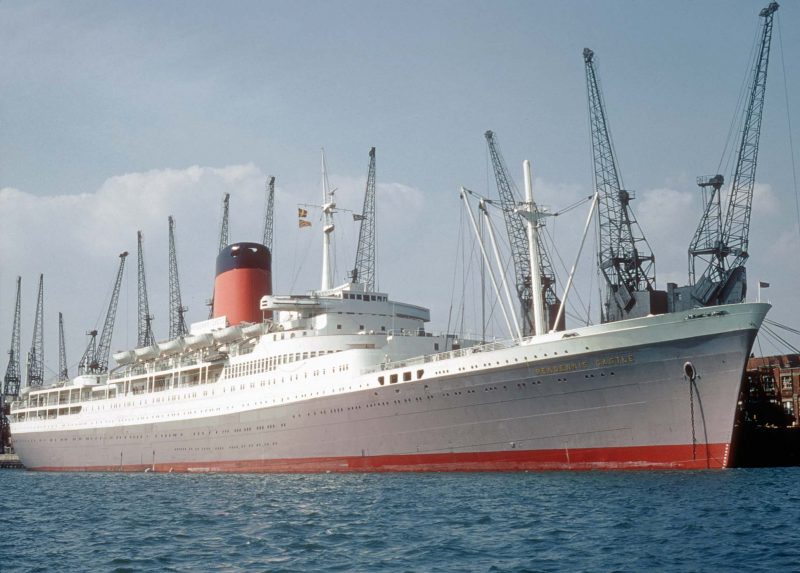
Two further, and ultimately the last big Union-Castle Line express mail liners, were on order from the Clydebank yard of John Brown & Co. Ltd. as Transvaal Castle, and Windsor Castle from the Birkenhead yard of Cammell, Laird & Co. Ltd. They were of similar size but were not sisters, with Windsor Castle 23 feet longer on overall length of 783 feet, and 2.4 feet wider at 92.6 feet, but with the same draft of 32 feet. Windsor Castle was launched first on 23rd June 1959 by H.M. The Queen Mother as the largest liner ever built in England and owned by the company, and was completed in August 1960 with interchangeable cabins to give a maximum of 241 passengers in First Class, and 541 in Tourist Class and with a crew of 475. She had sloping decks in her hull to give misaligned ports, but her public rooms were beautifully appointed and she was fully air-conditioned and stabilised. She was twin screw powered by two Parsons double reduction geared steam turbines of 49,000 shp to give a service speed of 22.5 knots. When the mail contract time to Cape Town became 11.5 days in July 1965, she passed on her outward voyage Athlone Castle of 1936, one of the last 13.5 day service liners on her last homeward voyage, a very poignant meeting.

Transvaal Castle measured 32,697 grt but was unique among big Union-Castle Line liners as she was one class, designated as ‘Hotel Class’ for 728 passengers with a big crew of 426. She had a range of eleven fares from expensive ‘De Luxe’ suites to ordinary berths, and carried 40 ‘stewardettes’ for servicing the Dining Room. All passengers had the run of the ship and the public rooms, and her swimming baths and other amenities were open to all. She sailed on her maiden voyage from Southampton on 18th January 1962, but was not as popular as Windsor Castle and Pendennis Castle, and was transferred to Safmarine on 1st January 1966 and renamed S. A. Vaal but continued with Union-Castle Line crew and management. She later changed her registry to Cape Town to become the largest vessel on the South African register. On 1st April 1976, she inaugurated the new harbour at Richards Bay in Natal province, the first new harbour to be opened by South Africa since it became one country in 1910.
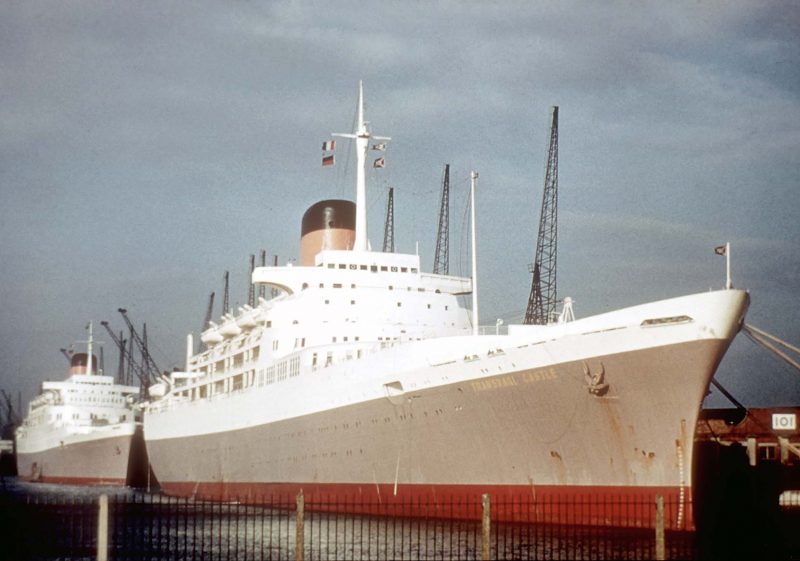
Windsor Castle had replaced Winchester Castle of 1930, and Transvaal Castle replaced Carnarvon Castle of 1926. Two fast passenger and cargo-liners entered service in 1965 from the Wallsend yard of Swan Hunter & Wigham Richardson Ltd. as Good Hope Castle and Southampton Castle, replacing Athlone Castle and Stirling Castle of 1936. The Tyne built sisters were twin screw with service speeds of 22.5 knots from twin eight cylinder Wallsend-Sulzer diesel engines of 34,729 bhp at 119 rpm. They could carry 11,035 tons of general and refrigerated cargo in seven holds, with cargo gear that included a Hallen heavy lift derrick of forty tonnes capacity for lifting deck containers. They had three shelterdecks and a part fourth deck, and were fitted with glass lined tanks to carry 60,000 gallons of wine. They were built under the British Government Shipbuilding Credit Scheme, which provided 80% of the six million pound cost for both vessels at almost 5% interest over ten years. They were among the fastest cargo ships afloat with a maximum ‘flat out’ speed of 25 knots, and they gained passenger cabins for a dozen Commonwealth officials in October 1967 so that calls at Ascension Island and St. Helena could be made following the withdrawal of the calls by Capetown Castle of 1938, sold for scrapping at La Spezia. Their profile was altered by enclosing the whole of the Boat Deck, lifting the lifeboat and adding a second pair. The detour added an extra 336 miles to the voyage. A crew of sixty was carried, mostly accommodated on the Bridge Deck, with the large structure above the Boat Deck but below the funnel housing two waste heat boilers for the turbo-electric generators plus two diesel generators for use when in port.
The arrival of Good Hope Castle and Southampton Castle meant that the accelerated mail sailings could be handled by seven ships instead of eight. These were Edinburgh Castle of 1948, Pretoria Castle of 1948, Pendennis Castle of 1958, Windsor Castle of 1960, Transvaal Castle of 1961, and the two sister Tyne built passenger and cargo-liners. Braemar Castle arrived at Faslane for breaking up on 6th January 1966 after a career of less than fourteen years. Independence in Africa had reduced the number of Europeans travelling on leave, plus the inroads made by air travel on the business had made the ‘Round Africa’ route uneconomic. The East African service was then shared between the two sisters of Braemar Castle and Kenya and Uganda of British India Line to give a monthly sailing, a frequency which depended almost entirely on Government officials. Rhodesia Castle and Kenya Castle were laid up in April and May 1967 to end Union-Castle Line involvement with East Africa, with Rhodesia Castle then sailing to Kaohsiung for breaking up, while Kenya Castle was sold to Chandris of Piraeus to become Amerikanis to sail on for another 34 years.
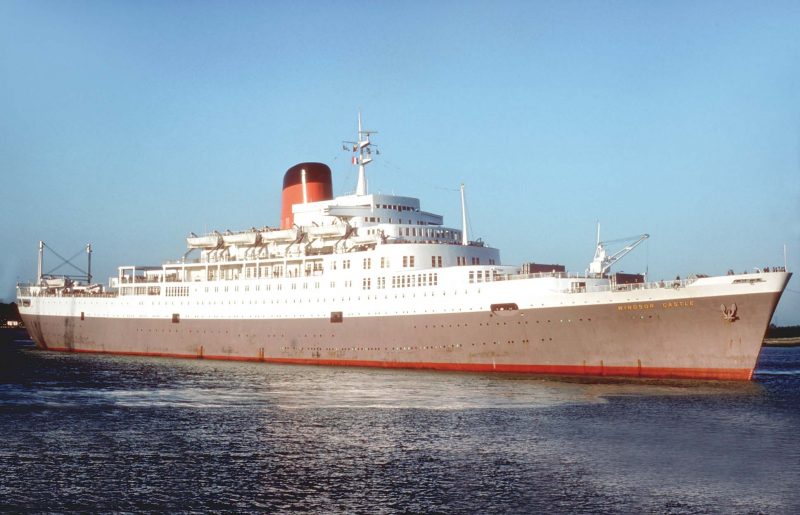
Union-Castle Line Finale
The British & Commonwealth Shipping Group fleet in 1973 comprised five express mail liners, the cruise ship Reina del Mar, and 26 refrigerated and general cargo ships, as well as four bulk carriers of up to 79,300 dwt with two more bulk carriers on order. The Chief Passenger Office of Union-Castle Line was at Rotherwick House in Old Bond Street in London, and there were a further thirteen branch offices in England and South Africa. However, passenger booking would only continue for a further four years, with Reina del Mar, which had been managed for the Travel Savings Association since 1964 and painted in Union-Castle Line colours and then acquired in 1973, was sold for scrapping at Kaohsiung after a period of only two years.
On 1st October 1973, the British & Commonwealth Shipping Group and Safmarine (U.K.) Ltd. combined their ship operations in the U.K. under the short lived title of International Liner Services Ltd. The new concern also embraced the Clan Line, Houston Line and King Line fleets. Rotherwick Castle and Rothesay Castle had been crewed by Clan Line since completion by the Greenock Dockyard in 1959/60, but were sold off in 1975 and replaced by four newer Clan Line cargo-liners, renamed as Balmoral Castle (ex Clan Robertson), Dover Castle (ex Clan Ranald), Kinpurnie Castle (ex Clan Ross) and Winchester Castle (ex Clan Ramsay).
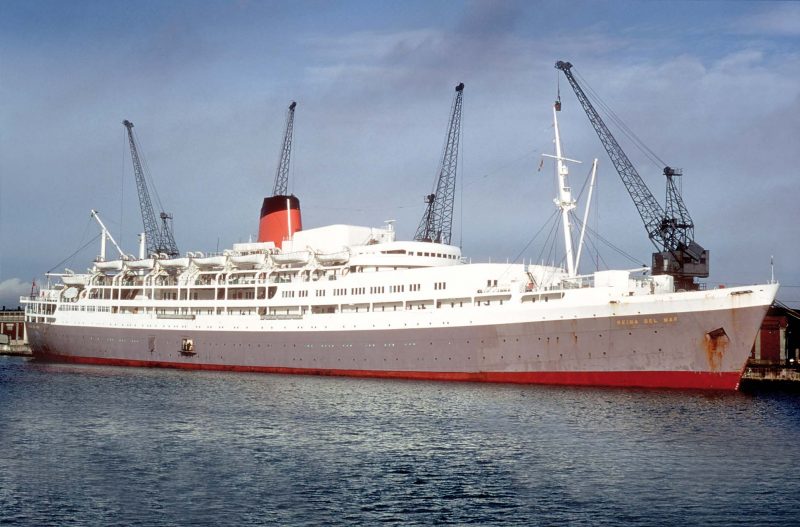
The express mail liner Pretoria Castle arrived at Kaohsiung for breaking up on 2nd November 1975, followed by the arrival of sister Edinburgh Castle at the same scrap yards in June 1976. Pendennis Castle was withdrawn from service on 14th June 1976 and sold for cruising, and was replaced by a chartered Blue Star Line reefer, Andalucia Star, in Union-Castle Line colours. Windsor Castle and S. A. Vaal continued the express mail service for a further year until Windsor Castle made the final company passenger sailing from Southampton to Cape Town on 12th August 1977 before being sold to John Latsis of Greece and renamed Margarita L. Finally, S. A. Vaal ended the great passenger service to Cape Town when she sailed from Southampton on 2nd September 1977, arriving back on 10th October 1977 for withdrawal from service. The last contracted mail sailing from Southampton to Cape Town was carried out by the cargo-liner Southampton Castle on 11th October 1977, and she and her sister were laid up until sold in February 1978 to Costa Line of Italy and renamed Franca C and Paola C respectively.
The monthly passenger sailing to Ascension Island and St. Helena was taken over by Curnow Shipping Ltd. of Cornwall, sailing from Avonmouth to Las Palmas, Ascension Island, St. Helena and Cape Town. Four cargo-liners were owned by Union-Castle Line in 1979, in the four former Clan Line vessels renamed as Balmoral Castle, Dover Castle, Kinpurnie Castle and Winchester Castle. The ‘Castle’ suffix of this quartet was replaced by ‘Universal’ when they became part of the joint U.K. and South African Universal Reefer Consortium later in 1979. The last pair of this quartet, Balmoral Universal and Kinpurnie Castle, were sold off at the end of 1982. It should be noted that the similar reefers Edinburgh Universal (ex Polar Honduras), Caribbean Universal (ex Polar Costa Rica), Stirling Universal and Meltem Universal were never owned by Union-Castle Line, but were chartered by their finance house owners to the Universal Reefer Consortium.
Postscript

Union-Castle Line was among the largest and most successful shipping companies in the world. The reliability and punctuality of the fleet was legendary with a mail steamer sailing from Southampton at exactly 1600 hours on a Thursday afternoon at the same time as a fleet mate sailed northwards from Cape Town. Mail, passenger, general and refrigerated cargo were carried very efficiently, especially from 1956 after its merger into the British & Commonwealth Shipping Group when venerable shipping companies were being reorganised and diversifying their interests.
Union-Castle Line also carried out a range of summer cruises using Reina del Mar, with a programme of cruises from the U.K. in summer ranging from the Baltic to the Mediterranean, and then during the winter operated her in another series of cruises from South Africa to South America. Union-Castle Line had managed the ship between 1964 and 1969 for the Travel Savings Association, and she was then chartered to Union-Castle Line for five years until purchased by the company in 1973 before expiry of the charter party. During the two years of Union-Castle Line ownership she performed the same cycle of British summer cruises and South African winter cruises.
All those that had travelled to South Africa, and the general public of South Africa, as well as shipping enthusiasts, felt a great sadness when the last three sailings of the mail contract were taken by Windsor Castle, S. A. Vaal and Southampton Castle between August and October 1977 to end 120 years of a great passenger and cargo service. Southampton berth 102 seemed empty without the lavender hulled Union-Castle Line ships, but eventually new cargo and cruise liner business was found to replace them. Berth 102 had been brought into use in 1956 for Union-Castle Line, and the dock building behind the quay was 932 feet in length with a width of 108 feet, with the upper storey used for the handling of cargo, principally wool. The passenger terminal at Berth 38/39 had also been used by Union-Castle Line from June 1966, and was officially opened by H. M. The Queen during the following month.

Union-Castle Line was as well known in the U.K. as Cunard Line was in the Transatlantic trades, and P. & O. in the Far East trades. The giant white container ships of Safmarine now ply the same trades as Union-Castle Line to South Africa. The main South African harbours today are Cape Town, Durban, Richards Bay, Saldanha, Port Elizabeth, East London, Ngqura (Coega) and Mossel Bay. The deep water port at Richards Bay has now been extended and its facilities upgraded as a major bulk export port, as is Saldanha. Today, more than thirty shipping lines serve South African ports. Safmarine has thus replaced Union-Castle Line in the African trades, Cunard Line has become a British cruise subsidiary of Carnival Cruise Corporation, and P. & O. has also exited the Far East cargo trades to operate cruises for the same British subsidiary of Carnival Cruise Corporation. How times have changed!
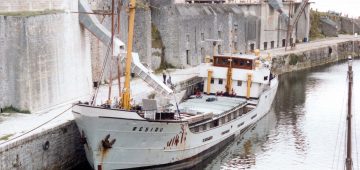



Comments
Sorry, comments are closed for this item